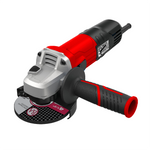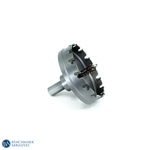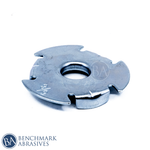
How to Flatten a Table Top With a Belt Sander

What is the simplest method of leveling a hardwood surface? Using this easy five-step procedure and a belt sander. We all experience it regularly. To create a tabletop, you glue together multiple pieces of wood. The wood shifts during clamping, resulting in an uneven surface. A belt sander is one of the best ways to even it out. You can flatten hardwood surfaces in five easy steps.
Steps To Flatten A Tabletop With A Belt Sander
Step 1- Wipe The Area Clean
To prepare the surface for work, clean it. Use a solvent to remove any glue or unwanted paint from the surface. A clean surface will aid your ability to assess what needs to be improved.
Step 2- Identify The High Points
It will be easier to notice the highs and lows if you light it from the side. Ensure that a straight edge remains parallel to the surface. Then, place it aside and note the highest point using a pencil.
Once you have loaded your sander with 120-grit abrasive belts, cut out the highest point. Do not sand against the grain. Sand against it, concentrating at the highest point. The belt sander should always be in motion. Leave no ridges or holes behind.
Step 3- Sand The Higher Areas
Sanding over pencil marks should be done lightly while holding the sander perpendicular to the grain. Never linger at one location. To effectively control your sander, you must always keep your arms relaxed. Take a break if you're feeling tired. To protect your ears and reduce distractions, use a hearing protector.
Step 4- Sand Across The Grain
Move the sander forward and slightly to the side while making a long "N" pattern, working from one side to the other. Use a dust mask if your job is prolonged because belt sanders also produce a lot of dust.
Step 5- Sand With The Grain
Use an 80-grit sanding belt now. Sand with the grain to eliminate cross-grain scratches. Change to a 120-grit belt when all visible scratches have been removed. The paint will likely leave behind little scuffs that can later be polished out by hand or with a finish sander.
Essential Points to Remember
The following are points to remember while using a belt sander to flatten a tabletop:
-
Technique: Getting a “feel” for the tool is crucial for learning how to flatten a tabletop with a belt sander. This includes maintaining balance and a comfortable hold, which enables the sander to do the job without pressing it, and learning how to use the exact amount of pressure. Ensure that your sander always keeps moving without staying in one spot. Be careful while using the sander, as it can create unevenness or gouges. Learning the right technique requires time and patience, as it is key to achieving a successful, flat, and smooth tabletop.
-
Alternative tools: There are other alternative tools for belt sanders. Go for a planer or a drum sander if you have access, as they are significantly better options for flattening a tabletop. They will generate even and more consistent results.
-
Dust control: It is the key point to remember when using a belt sander, as it is effective for your surroundings as well as for your health. During the sanding process, a significant amount of dust is generated, which can be harmful to the inhalation system. To prevent it, ensure to wear a proper dust mask. Also, ensure that the work is properly ventilated, and use a dust collection system that lets the operators see things clearly while sanding, giving a smooth and accurate finish.



































































